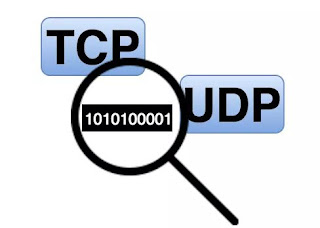𝙏𝘾𝙋/𝙐𝘿𝙋
𝙏𝘾𝙋:
- TCP is connection oriented - once a connection is established, data can be sent bidirectionally over that conection.
- TCP carries out sequencing to ensure segments are processed in the correct order and none are missing.
- TCP is reliable - the receiving host sends acknowledgments back to the sender, and lost segments are resent.
- TCP performs flow control, where :
Flow control means that if the sender is sending at a rate too high, and the receiver can't handle it, the receiver sends signal back to the sender telling it to slow down.
𝙐𝘿𝙋:
- UDP is not connection oriented.
- UDP does not carry out sequencing to ensure segments are processed in the correct order and none are missing.
- UDP is not reliable - the receiving host doesn't send acknowledgments back to the sender.
- UDP doesn't perform flow control.
𝙏𝘾𝙋/𝙐𝘿𝙋 𝘼𝙥𝙥𝙡𝙞𝙘𝙖𝙩𝙞𝙤𝙣𝙨:
- Application developers will typically choose the use of TCP for traffic which requires reliability.
Examples: web browsing, text chat, bank transactions, File transfer.
- Real time applications such as voice and video can't afford the data overhead of TCP, so they use UDP.
Examples: streaming video, streaming radio, voice over IP calls, multiplayer games.
- Some applications can use both TCP and UDP.
𝑪𝒐𝒎𝒎𝒐𝒏 𝒂𝒑𝒑𝒍𝒊𝒄𝒂𝒕𝒊𝒐𝒏𝒔 𝒂𝒏𝒅 𝒕𝒉𝒆𝒊𝒓 𝒅𝒆𝒔𝒕𝒊𝒏𝒂𝒕𝒊𝒐𝒏 𝒑𝒐𝒓𝒕𝒔:
𝙏𝘾𝙋:
- FTP (21), SSH(22), Telnet(23), HTTP(80), HTTPS(443)
𝙐𝘿𝙋:
-TFTP(69), SNMP(161).
𝙏𝘾𝙋 𝙖𝙣𝙙 𝙐𝘿𝙋:
-DNS(53)




2 Comments
trepinceoma Kimberly Sammons https://wakelet.com/wake/QtZuTA_yEX-akOnDA-w9F
ReplyDeletesilangatshand
speritci_ro Tim Beard Software
ReplyDeleteAwesome
quehattiber